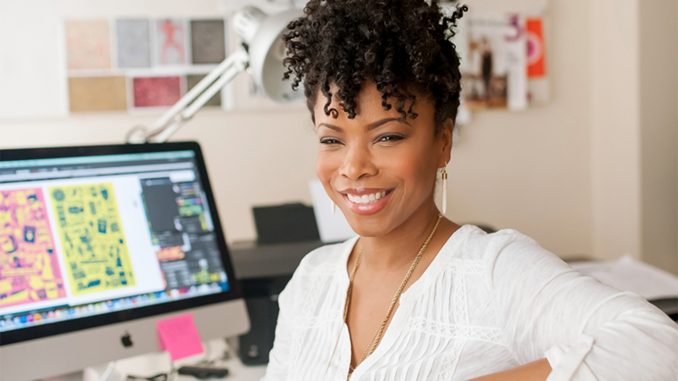

A Tyler alumna’s new coloring book, “I Love My Hair,” will feature artistic designs of women’s hair, celebrating each individual’s beauty.
Pippins, a 2009 Tyler alumna with a degree in graphic design, will release the book on Nov. 10. The concept behind the book came from I LOVE MY HAIR, a campaign Pippins created in graduate school to encourage African American women to love their natural hair.
“I’d been wanting to do a coloring book, so when I met an art director at Random House, I sent her some coloring book ideas, none of which had anything to do with hair,” Pippins said. “After looking at my artwork, she responded back asking if I’d be interested in doing a coloring book about hair, and I thought it was a great idea.”
Her coloring book will feature hairstyles like braids and mohawks with stylish accessories. Pippins sees hair as a way to embellish women, add to their confidence and create a certain desired look. As a designer, Pippins creates digital and screen-printed artwork where she delves into color, patterns and texture—just like hair.
But Pippins doesn’t think a hairstyle defines a woman.
“I think hair is something that can make a statement or add to someone’s style, or be something that is just fun to play with—but I don’t think it defines a person,” Pippins said. “Just as clothes or body parts wouldn’t.”
Pippins wants women of all different races and hair textures to embrace their hair.
Lori Tharps, an associate professor of journalism, shares some of the same beliefs.
Tharps co-authored “Hair Story: Untangling the Roots of Black Hair in America” in 2001.
“We wanted to explore the history, culture and politics of black hair in society,” Tharps said. “In Africa, hair stood as the source of identity, a status in society. Hair was sacred to imperial Africans, a source of power. ‘Hair Story’ wanted non-black people to understand and really learn about the black culture. We wanted to share the positive and important aspect of history, one of pride not one of shame.”
The issues surrounding Black hair continue today, with negative implications like the term “nappy.” Tharps said there is a constant need to explain black hair, because it’s “different from white hair.”
Tharps wanted readers to understand the physicality of how African Americans deal with their hair as well as the meaning behind it.
“It has negative connotations because of our tight coils, because it’s not long, flowy, blonde,” Tharps said. “It’s been used as an ugly insult because everyone wants long hair like European hair. Different doesn’t have to be negative. Different is different.”
Drui Caldwell can be reached at drui.caldwell@temple.edu.


Be the first to comment